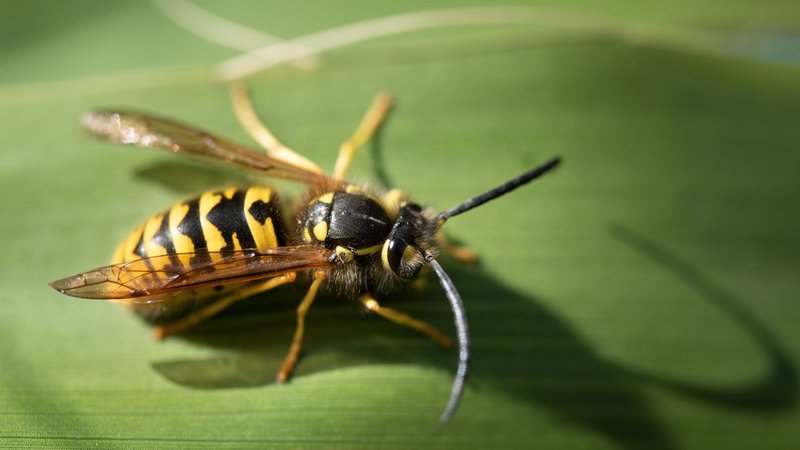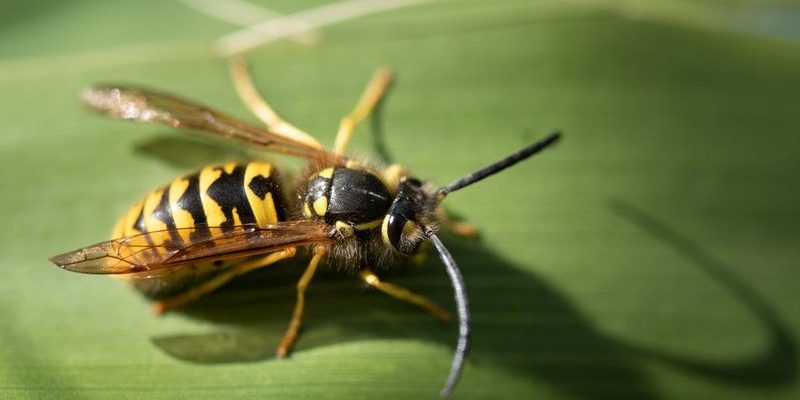
Yellowjackets are a type of wasp, and they can be quite aggressive, especially when protecting their nests. If you’ve ever had one dive-bombing you at a picnic, you know they’re not shy about expressing their displeasure. They’re not just nuisances, though; understanding their behavior and potential risks can help keep you safe. So, let’s take a closer look at what makes these insects tick and why we might want to think twice before swatting them.
What Are Yellowjackets?
Yellowjackets belong to the family Vespidae, which includes various types of wasps. They are easily recognizable by their distinct yellow and black coloring. This vibrant hue isn’t just for show; it serves as a warning to potential predators. Think of it like wearing a bright jacket that says, “I’m not what you want to mess with!”
There are several species of yellowjackets, but the most common in North America include the Eastern Yellowjacket and the Western Yellowjacket. They build their nests in the ground, inside wall cavities, or even in bushes. The nests can host thousands of yellowjackets, especially during peak summer months. If you stumble upon one, subtlety becomes your best friend!
How Do Yellowjackets Behave?
Yellowjackets are social insects and live in colonies that can grow to be quite large. They’re also known for their scavenging habits, often searching for food—particularly protein sources like meat or sugary items. Ever left your plate unattended at a picnic? You might find a yellowjacket has claimed it as its own!
Here’s the thing: their behavior can change from docile to aggressive, especially if they feel threatened. If you get too close to their nest or swat at them, they can swarm and sting. Unlike bees, which can only sting once, yellowjackets can sting multiple times. This is where they can become particularly dangerous.
Are Yellowjacket Stings Dangerous?
Honestly, a yellowjacket sting can hurt—like, really hurt. The sting feels like a sharp pinch followed by a burning sensation. For most people, it’s just a painful annoyance, but for some, it can lead to more severe reactions. If you’re allergic, a sting can trigger anaphylaxis, a serious condition that requires immediate medical attention.
Symptoms of a yellowjacket sting may include:
- Sharp pain at the sting site
- Swelling and redness
- Itching or rash
- In severe cases, difficulty breathing or swelling of the throat
If you know you’re allergic to wasp stings, it’s crucial always to carry an epinephrine auto-injector (EpiPen) with you, particularly during outdoor activities. It could be a lifesaver.
What Should You Do If Stung?
If you find yourself on the unfortunate end of a yellowjacket sting, don’t panic. Here’s what you can do:
1. Remove the Stinger (if present): Unlike bees, yellowjackets don’t leave their stingers in the skin. They can sting multiple times, but it’s still good to check for a stinger.
2. Wash the Area: Clean the sting site with soap and water to reduce the risk of infection.
3. Apply Ice: Use a cold compress or ice wrapped in a cloth to reduce swelling and pain. Don’t apply ice directly to the skin.
4. Use Over-the-Counter Treatments: Antihistamines or hydrocortisone cream can help alleviate itching and swelling.
If you experience a severe allergic reaction, call for help immediately. Remember, it’s always better to be safe than sorry!
How Can You Prevent Yellowjacket Encounters?
Prevention is key when it comes to avoiding yellowjackets. Here are some tips to keep these pesky wasps at bay during your outdoor fun:
- Cover Food and Drinks: Keep food tightly sealed and covered. If using containers, opt for ones that are wasp-proof.
- Dispose of Trash Properly: Make sure trash bins are covered and cleaned up regularly to minimize attractants.
- Avoid Swatting: If a yellowjacket approaches, remain calm and avoid swatting. Quick movements can provoke them.
- Use Insect Repellent: Consider a natural repellent that deters wasps, especially if you’re in an area known for them.
By taking these simple precautions, you can enjoy your outdoor experiences without constantly looking over your shoulder.
When to Seek Professional Help
In some cases, you might find yellowjackets nesting in or around your home. This can be more than just an annoyance; it can be a safety hazard. If you notice a nest, it’s best to keep your distance and consider calling pest control. Professionals have the experience and tools to safely remove the nest without putting you at risk.
Furthermore, if someone is stung and shows signs of severe reactions (like difficulty breathing), call for help right away. It’s always better to be cautious.
Final Thoughts on Yellowjackets
So, are yellowjackets dangerous to humans? The answer is yes, but with some understanding and caution, you can avoid most of the risks they pose. Remember, they’re just trying to find food and protect their homes like we are. By respecting their space and taking preventive measures, you can enjoy the outdoors without fear.
Life’s too short to let yellowjackets ruin that nice day out in the sun. Stay informed, stay cautious, and keep enjoying those summer picnics!

